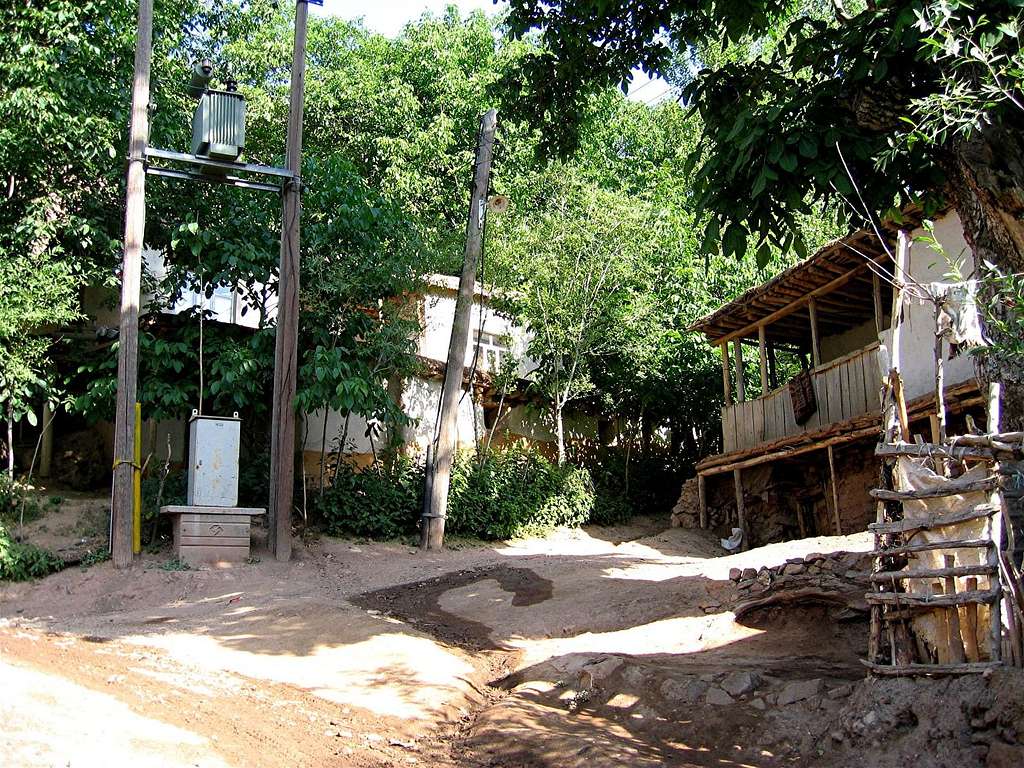Damavand - Jan 24, 2007 11:17 pm - Voted 10/10
The most beautiful !This far village is protected its ancient artichitecture of Iranian villages, nice people, beautiful children and an old dialect of Persian ('Tati'). It's one of the best villages that I've ever seen in north part of Iran. I like to live there at least a short period. I was there June 2006 too. Thank you for this page and pictures.
nader - Jan 26, 2007 3:10 am - Hasn't voted
Re: The most beautiful !I just saw your pictures of Siyalan. Very nice. Seems like you were there just a few days/weeks before me. There seems to be much more snow in your pictures.
Interesting to hear about the "Tati" dialect. I had never heard of it. When peolpe in Haniz spoke, I could clearly understand them. The Gilaki dialect, however, seems to be different. I could not at all understand people near Asal Mahaleh or Kelardasht when they spoke amongst themselves.
Damavand - Jan 27, 2007 10:55 pm - Voted 10/10
Re: About Tati.Dear Nader, I think information about “Tati” and other dialects is interesting for you,
So I start from the beginning: After Indo-European immigration, eastern Aryans went to India and western Aryans branch took up position from Black sea and Caucasian to Hindo-kosh mountains and to the south to Persian Gulf. They named this aria Iran and their language is named Iranian's Mother Language (3000~1200 BC). During the time some dialects appeared and formed Ancient Iranian Languages (1200BC ~ 330BC): Old Persian, Avestan, Saka and Medes are registered (languages of Medes and Achaemenian Empires and Iranians prophet Zoroaster). Normally during the next times dialects changed and formed Middle Iranian Languages (330BC~650AC): Pahlavi, Middle Persian … (languages during Parthian and Sasanian kingdoms). Till this point is categorized ‘Ancient Period’ by scientists, but must be attention that language is a direct current and connected without real border.
After Arabs attacks to Iran(651AC) and Islam’s government, Arabic became official language for two centuries. Although Iran’s people didn’t know Arabic, but Iran’s scientists had to write their book in Arabic. After Iranian revolution against Arabs, Yaghub-e Leyss the founder of Saffarian (the first independent kingdom) returned the official language to Persian. Iranian languages after 650AC are categorized as New Period of Iranian Languages. Those are Modern Persian or Dari (official language of Iran, Afghanistan and Tajikistan), Kurdish (in Iran, Turkey, Iraq and Syria), Pashto (another official language of Afghanistan), Baluchi (in Iran, Pakistan and Turkmenistan), Osseti (language of north and south Ossetia in Georgia and Russia), Gilaki, Lori, Azari, Taleshi, Tati and other various dialects in Iran, Caucasia, Russia, Turkmenistan, Tajikistan, Uzbekistan, Tibet, Pakistan, Turkey, Syria, Iraq, UAE, Bahrain, Oman and Israel.
After 1100AC Iran faced to Turk and Mongol tribes rush from north east and central of Asia. In Iran all of them were accepting Persian language, culture and religion. Western branch of Seljuk tribes occupied Asia Minor and ruled in Anatoly for a long. People’s language of Asia Mirror changed to Turkish in that period. In any case Turkish in Iran was the language of some small immigrated Turks and Turkmen tribes.
Fahlavi, Azari, Tati and Taleshi were following in north west of Iran and Caucasia till 16th century. Azari, Tati and Taleshi and closed dialects to them were languages from Qazvin, Zanjan, Tabriz and eastern Azerbaijan to the north, along the Caspian Sea, to the north lands of Caucasian mountains and Fahlavi and closed dialects to it were following from Hamedan to Armenia in western side of Azerbaijan.
During the Safavieh dynasty time (17th centuries) Ottoman occupied Tabriz, Azerbayjan and Caucasia several times and Turkish developed as an unofficial language in those areas between people. Nader Shah (founder of Afsharian dynasty) in 18th century defeated Ottoman forever and they retreat from Azerbayjan and Caucas, but development of Turkish continued during 19th century, Ghajarieh time and then stopped.
Turkish remained and local languages disappeared, although official and cultural language were Modern Persian.
Now Tati language is remained just in Taleghan and Alamout region and some small areas in Caucasia and Russia near to Caspian Sea side.
Generally several dialects of a language are branches of one root, some of them are closer and some other are not. Each of them preserve some special angels of the root during the time. Modern Persian, Kordish, Baluchi and Pashto are from New Iranian Languages, similar to English, German, Dutch and Africaans languages from West Germanic branch.
have the best moments.
nader - Jan 28, 2007 12:53 am - Hasn't voted
Re: About Tati.Very interesting information. Thanks.







Comments
Post a Comment